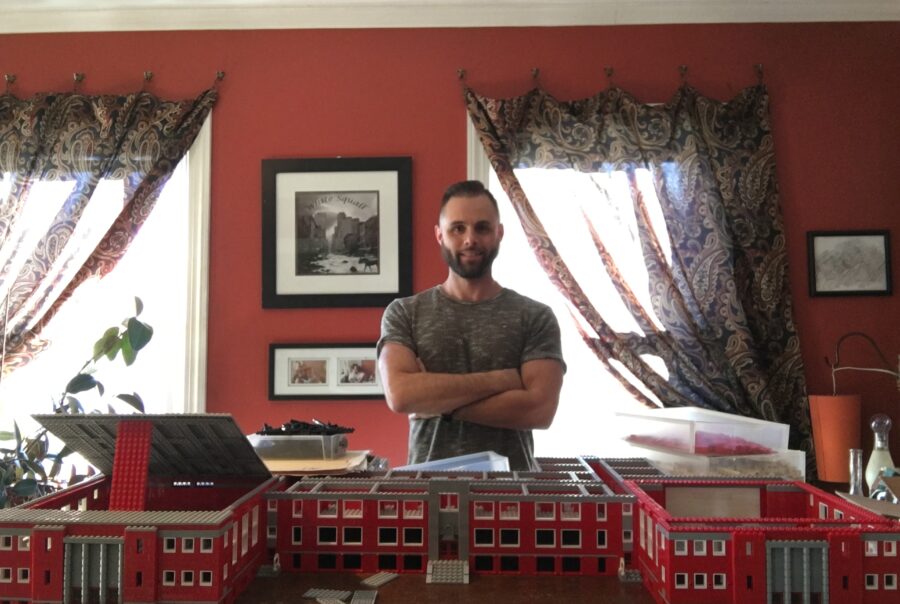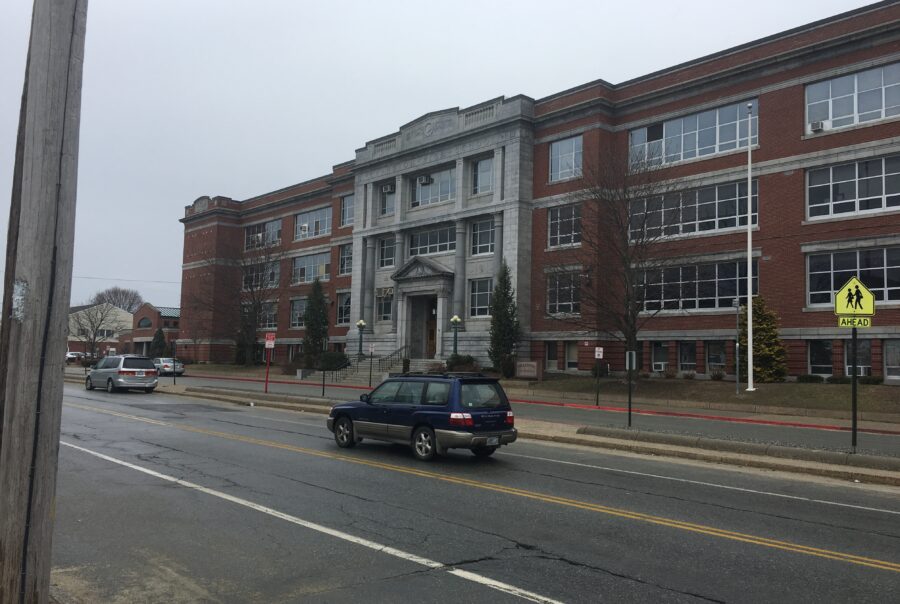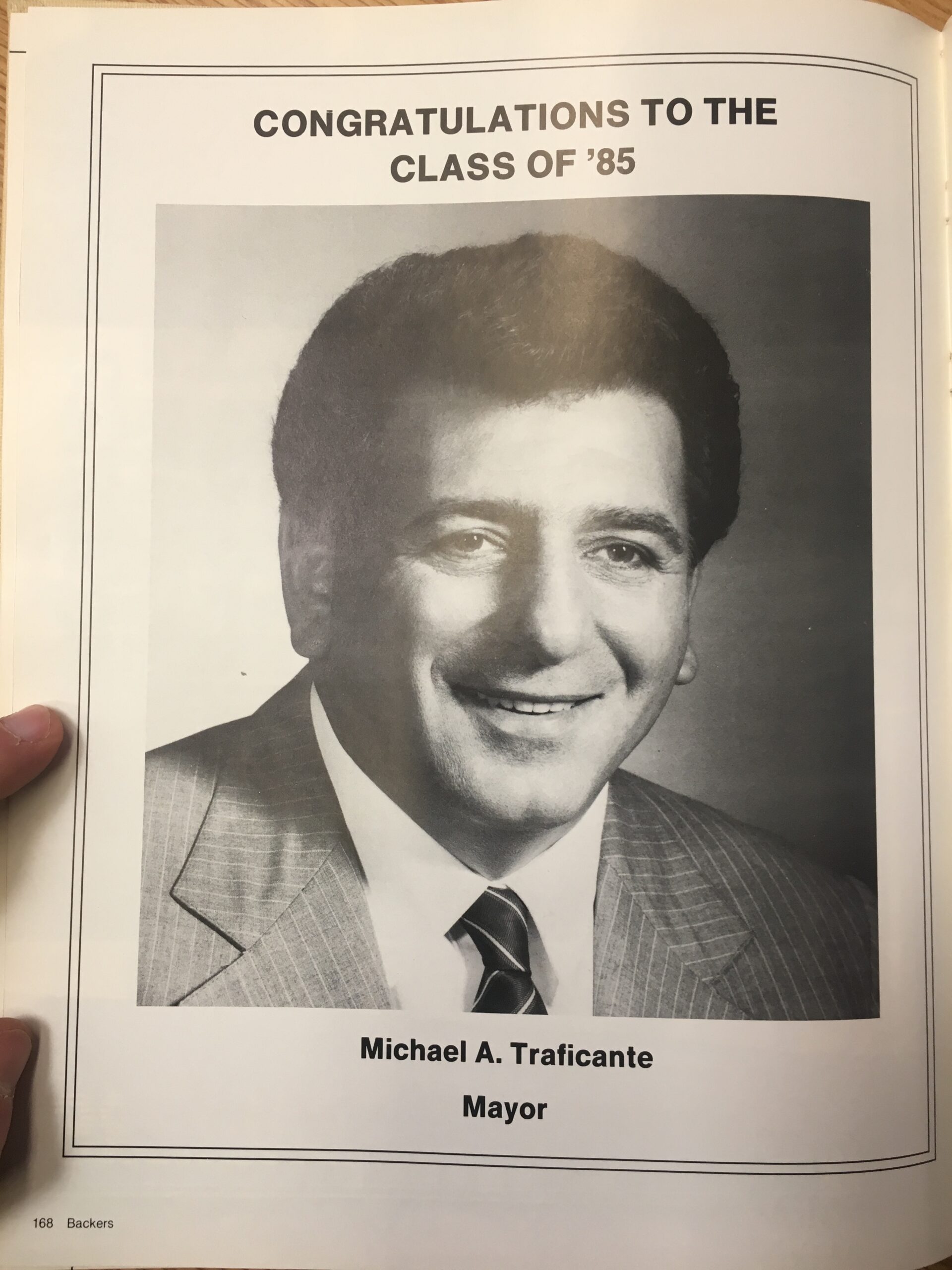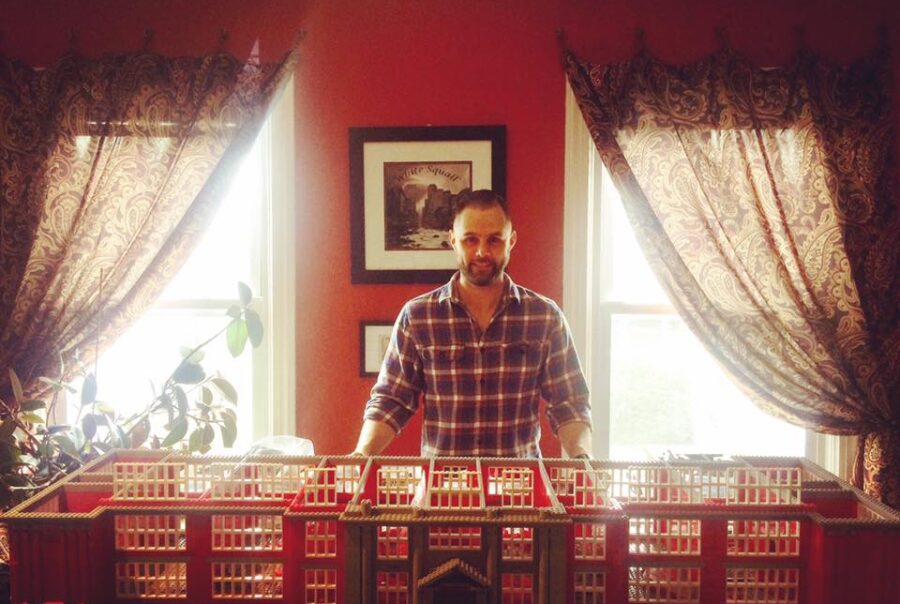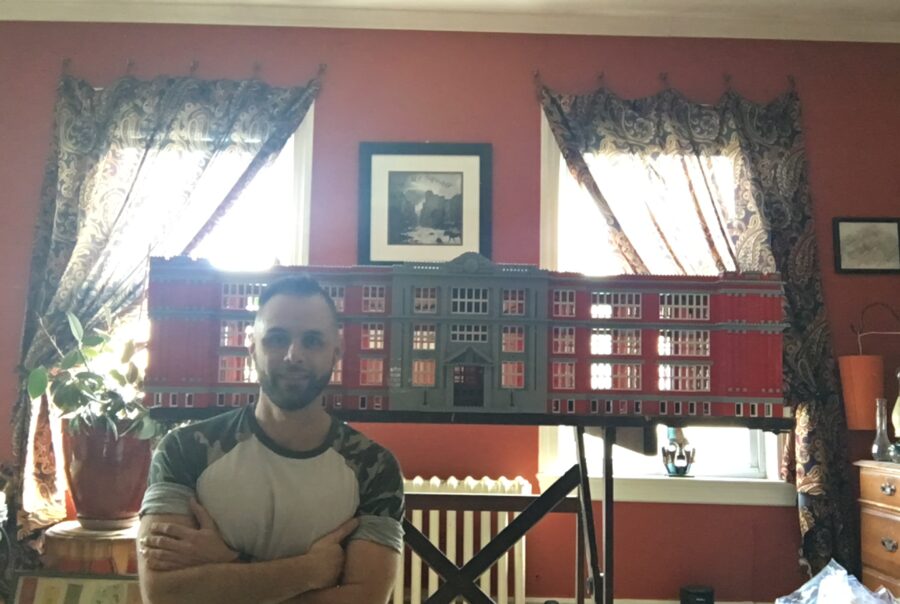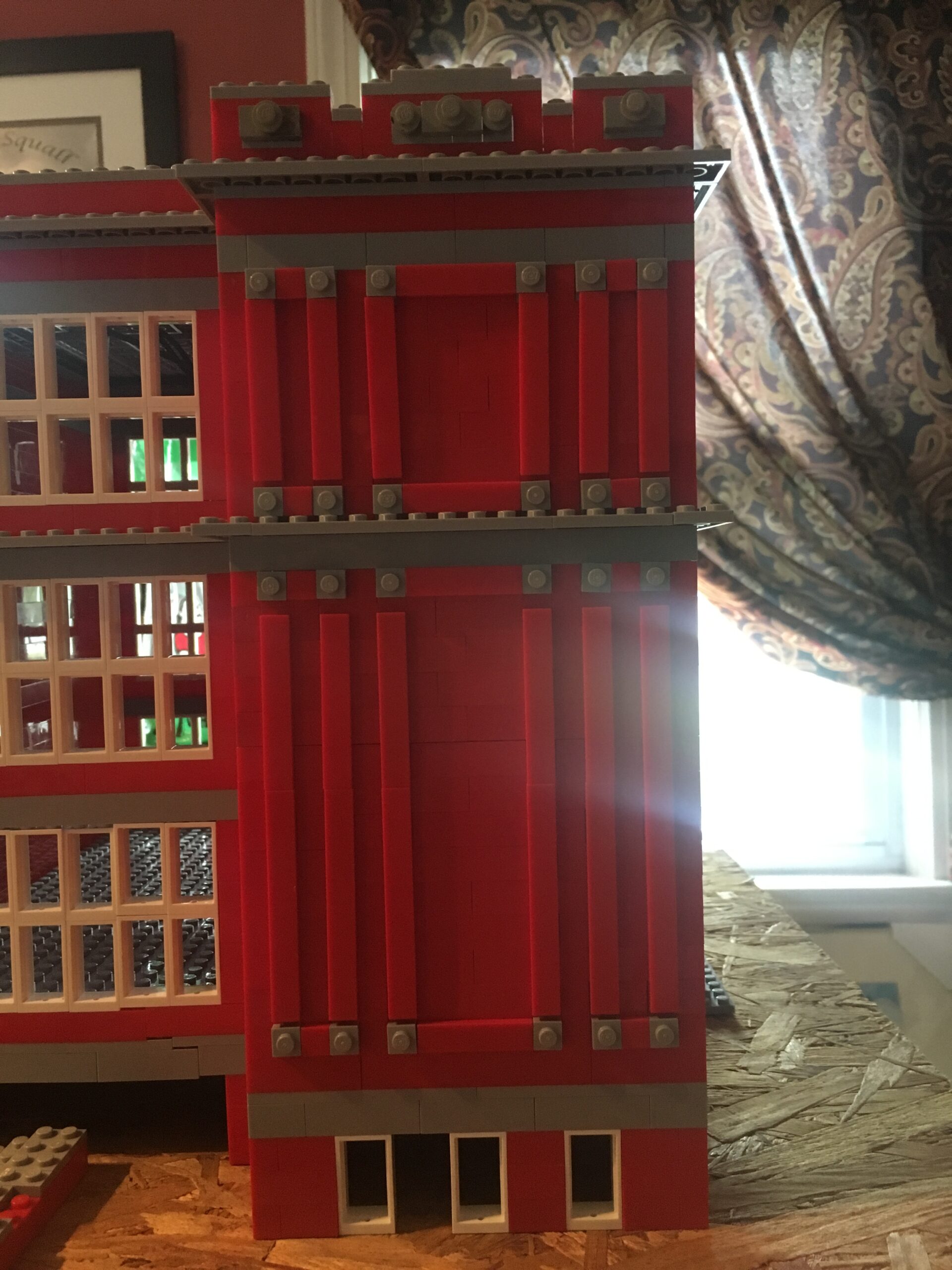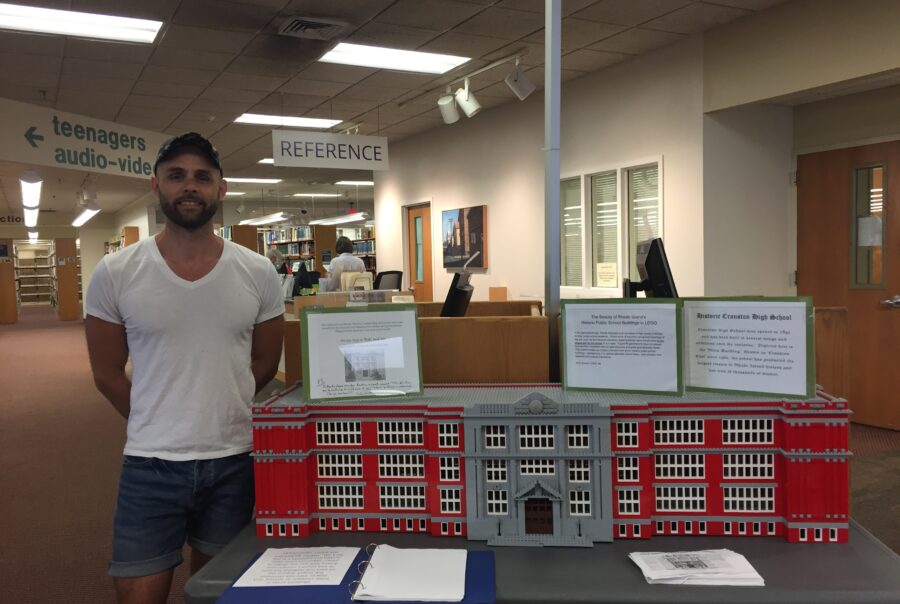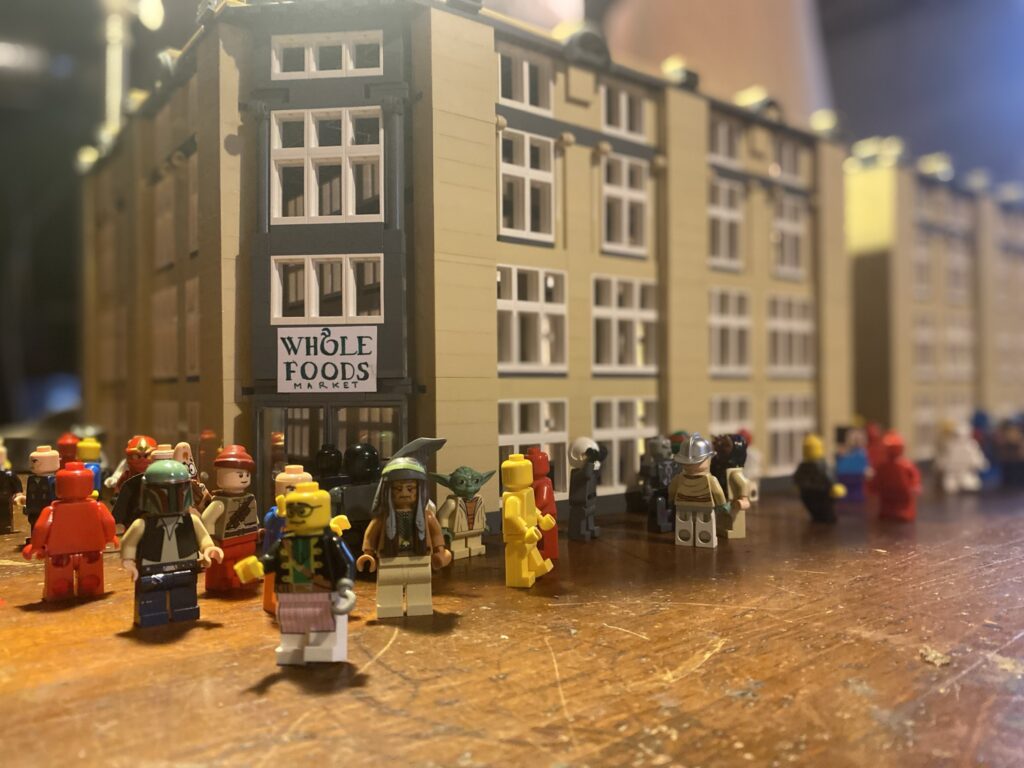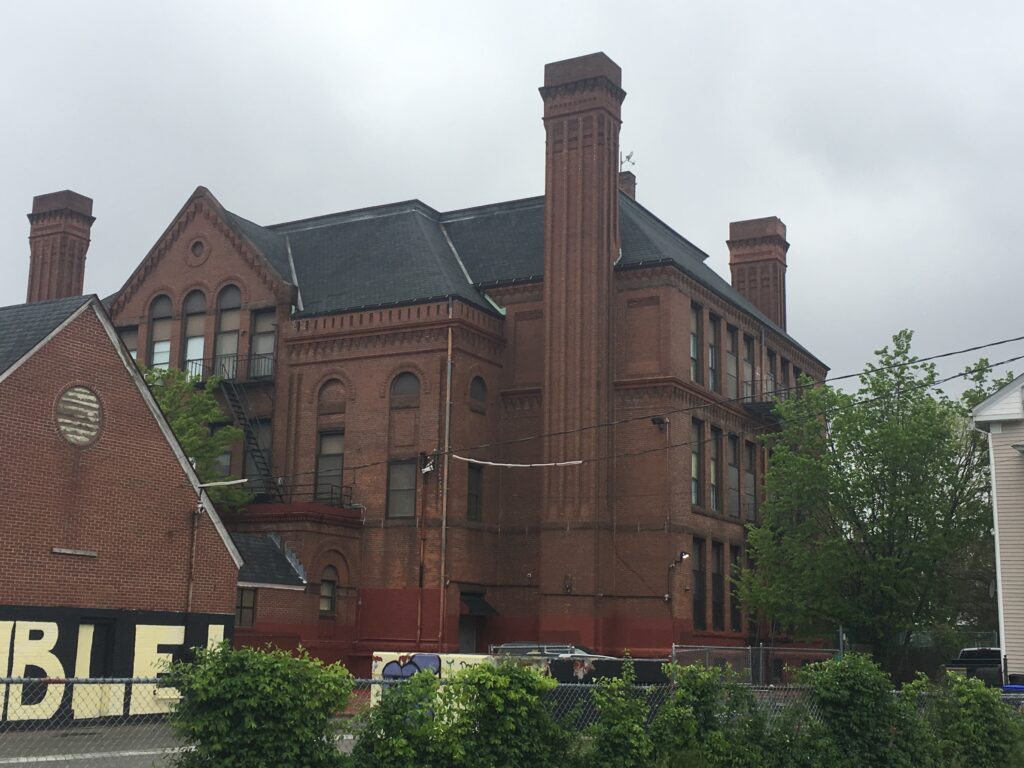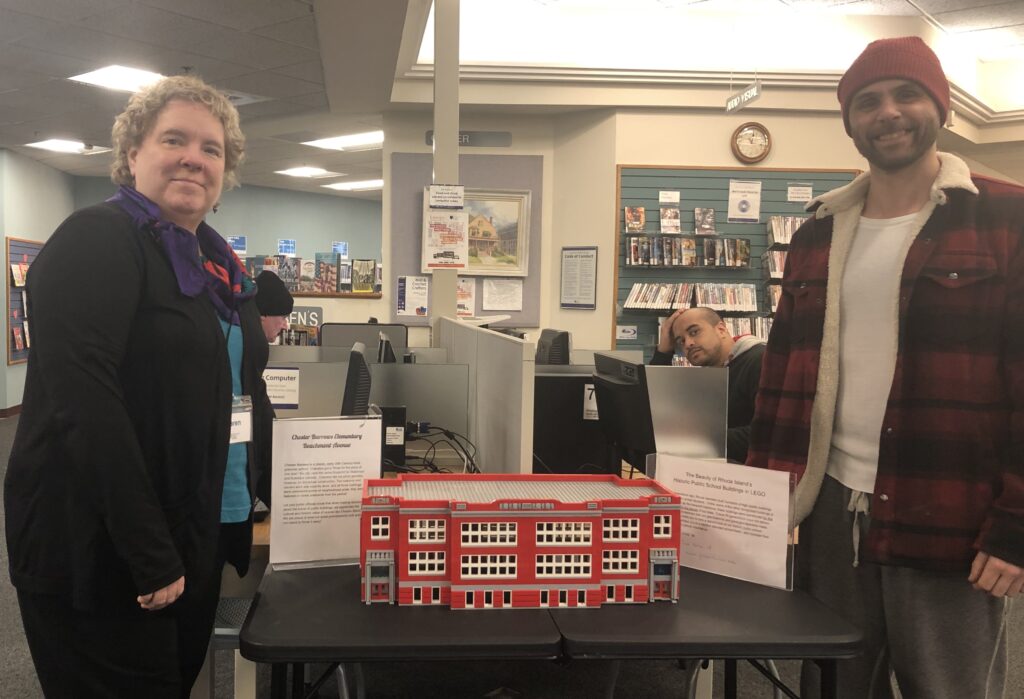Cranston East is one of the two public high schools in Cranston. It is the older of the two high schools and before the other was built around 1960, it was simply known as Cranston High School. The history of the school is a bit of a long story as it occupies a few different buildings and there are layers of wings and additions that were added over time. The simple version: it opened in 1891, and the oldest surviving portion, the Briggs Building, was built around 1900. The main part of the school, which is what I have depicted, was completed in the late 20’s and has the classic Greek temple style that tended to be used for buildings that were meant to make a statement. Indeed, Cranston East strongly projects the aspirations of its city around the turn of the century. This building is one of the finest examples of a public building (and buildings in general) in the state, then and now. Bravo, early 20th century Cranstonians!
Cranston East
In addition to its aesthetics, I was also attracted to Cranston East as a point of shared cultural heritage. It is a large school in an area of RI that has seen good cross-sections of the RI experience for the past century. Another way of putting it: everything you know about RI history in the 20th century can be seen in its yearbook pages. Indeed, as a bit of ‘research’ I did before the project, I spent a Saturday afternoon looking through old Cranston High School yearbooks at the Cranston Public Library. A couple of take-aways from that afternoon:
- In the teens and twenties, the student body and faculty was terrifically old New-England Yankee. Everyone had names like “Henry Waterman” and “Prudence Babcock.” RIers think of Cranston as super Italian, but Italians were few and far between in the yearbooks of that era. And those few stuck out like sore thumbs in between all those Henrys and Prudences.
- Then around 1935, something happened – the whole city went Italian, instantly, 5% to 90% in three years!
- Different ethnic groups tended to wax and wane, but the yearbooks reminded me of some groups that have always held a small but steady in Rhode Island and sometimes get forgotten: Armenians, Greeks, Jewish peoples, and people from the Levant.
- People love looking at yearbooks from the 50s and 60s for all the hair, glasses, and styles. Cranston East did not disappoint at all. The hair got bigger and bigger and bigger and bigger ….
- Another paradigm shift occurred in 1970. The yearbook went from black and white, ties and skirts, Buddy Holly to color, long hair, flowers, Vietnam War elegies, and weird poems within two years. I’m surmising that some old yearbook advisor kicked the bucket and the pent up hippie exploded.
- The student body diversification continued after the seventies. Lots of African-American, Asian, and Latino faces pop up in the pages. The eighties yearbooks got amusingly ‘techie’ – big computers, fat-keyed keyboards, pocket calculators, AV-equipment. A lot of Rhode Island’s favorite crooked politicians were featured prominently in the booster pages (before we knew they were crooked). Ed DiPriete wished the class of ’85 a promising future, stuff like that.
All humor aside, I like that the people walking through the halls of Cranston East at a particular time tended to be a not-terrible representation of what Rhode Island looked like at a particular time. I realized that the school has been diverse in a way that the vast majority of schools are not. A ‘diverse’ student body is often a euphemism for a horribly ghettoized city school, but at CHSE, diverse really means diverse – more or less.
I decided that this project would be ideal for a foray into crowd-funding. These buildings are points of shared cultural heritage, and financially funding a project via small donations from hundreds of people connected to a building is wonderfully consistent with the spirit of the project. I am happy to say that I was able to crowd-fund enough money to build the main part of the building. In the future, I would love to add the old gymnasium or the handsome Briggs building, but I am very pleased with how things worked out. I also learned a lot about crowd-funding, and I am eager to use it again for a future project.
The Cranston East model had a public showing at PVDFest 2018 and an extended display at the Cranston Public Library from July to October 2018. At the end of October, CPL and the Providence Public Library co-organized a panel discussion ‘Reading Our Public School Architecture’ based around the exhibit. The event was hosted by Cranston librarians Beth Johnson and Zach Berger, and it was moderated by Christina Bevilacqua from PPL. Myself, and three other people sat on the panel: writer and historian Taylor Polites, Cranston historian Sandra Moyer, and architect/historian Ned Connors. My credentials – lego builder – seemed a little funny next to these folks! It was a lovely evening of energetic, inspiring, and intimate conversation (hats off to Christina for generating such a rich atmosphere), and to say I enjoyed it would be an incredible understatement!
